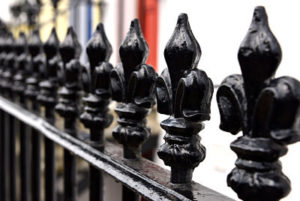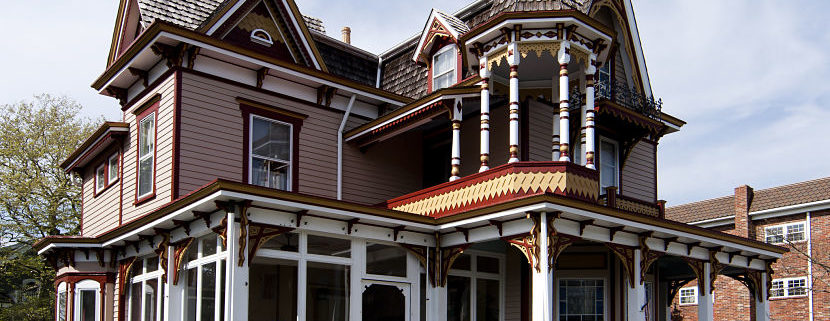Victorian Homes In NOLA
Victorian Homes in New Orleans
Spend any time driving around the city of New Orleans and something you may notice more than any other (when it comes to real estate) and that’s the sheer volume of Victorian influence on so many homes. It appears that Victorian accents, especially ornate wrought-iron balconies, go with New Orleans like Shrimp and Gumbo. So what’s with all the Victorian influence on real estate? Why so many Victorian style homes? It all has to do with New Orleans heritage and goes all the way back to 1803. In order to understand Victorian style, we have to go over a little history first.
The Louisiana Purchase
Most people have heard of the “Louisiana Purchase” from grade school. If you aren’t fresh on the details, here’s a quick summary. In 1803, over two hundred years ago, Thomas Jefferson, our third president purchased the “Louisiana Territory” from France for a “steal” of a price, which we’ll get to in a minute. In the early 1700’s France had explored and staked claim to a vast territory that spanned from New Orleans in the south, all the way up the Mississippi River to the Great Lakes and Canadian border to the North, and westward at an angle over to what is Montana today. France held more “US” territory than any other country at the time.
Acquisition of the Louisiana Territory
For a brief time, following the French and Indian War, France surrendered much of the Louisiana Territory to Spain, and later, the rest of it to Great Britain. Spain pretty much just sat around and did nothing with the territory for the entire time they possessed it. In the late 1700’s, Spain got into a spat with Great Britain and then signed a secret treaty with France, which among other things, secretly returned its share of the territory back to France. Following some uncertainty in the land due to Napoleon Bonaparte and his world-domination ambitions, the US allied with Great Britain in preparation for some conflict with France. At the time, the British Navy was the most powerful Navy in the world, so it sent a strong warning to France not to mess with the US, even though they possessed the Louisiana Territory. Following some brilliant diplomatic maneuvering on the part of the US Government, Thomas Jefferson sent the future president, James Monroe, to France to negotiate the purchase of New Orleans (purely to control access in and out of the Mississippi River). In a much unexpected surprise offer, France asked if the United States wanted to purchase the entire Louisiana territory for the bargain price of just over $11.5 million dollars… all 838 thousand square miles, at less than three cents per acre!
New Orleans AKA “NOLA”
 So now that we know why New Orleans is relevant to the story, we can understand why so much French influence was around, especially on the Western Side of the Southern Mississippi River Valley. French culture and heritage was everywhere. And since New Orleans was the wealthy port city, many wealthy French (Europeans) were living there. Since Victorian style and architecture was so popular in Europe… not just in England – where Victorian style originated (named after Queen Victoria, Queen of the United Kingdom, Great Britain, and Ireland from 1837 to 1901) – Victorian architecture had become a widespread style in New Orleans. Funny thing about Victorian Architecture is that it had actually been around for more than a hundred years before Queen Victoria. It developed from a variety of styles, all something different from each other, and most commonly confused with “Queen Anne” architecture. But it was most popular during Queen Victoria’s reign, and it received the name due to England and France’s habit of naming architectural styles after current reigning Monarchs.
So now that we know why New Orleans is relevant to the story, we can understand why so much French influence was around, especially on the Western Side of the Southern Mississippi River Valley. French culture and heritage was everywhere. And since New Orleans was the wealthy port city, many wealthy French (Europeans) were living there. Since Victorian style and architecture was so popular in Europe… not just in England – where Victorian style originated (named after Queen Victoria, Queen of the United Kingdom, Great Britain, and Ireland from 1837 to 1901) – Victorian architecture had become a widespread style in New Orleans. Funny thing about Victorian Architecture is that it had actually been around for more than a hundred years before Queen Victoria. It developed from a variety of styles, all something different from each other, and most commonly confused with “Queen Anne” architecture. But it was most popular during Queen Victoria’s reign, and it received the name due to England and France’s habit of naming architectural styles after current reigning Monarchs.
Present Day Victorian Architecture
In present day New Orleans, Victorian Architecture can be observed just about everywhere; most prevalently in the New Orleans French Quarter where most buildings have Victorian style wrought-iron railings on just about every one of the upper story balconies. The style is extremely prominent, and if you don’t notice it, well, you probably aren’t looking.
Victorian Home Features
Victorian Architecture of today is most recognized by features such as ornate trim-work, high pointed gables, bright colors, and elaborate sculptured or stained glass windows. Many Victorian homes are two to three stories in height, have highly decorative wood or stone exterior trim, complicated asymmetrical shapes, textured wall surfaces, and steep pointy roof-lines. Some high-end Victorian NOLA homes also feature distinctively steep, square or round embellished towers added onto one or more of the four corners of the home. Almost all Victorian homes have, or at least at one time, had, very bright vibrant colors, but this trend has since become less popular and many Victorian homes of today have settled for less colorful designs. Probably, in my opinion, because people got tired of buying forty different colors of paint every time the house needed to be repainted.
Buying a Victorian House
So if you’re fan of Victorian Architecture, without a doubt, you can find examples of it in many cities all throughout the country, but none so concentrated as what you’ll find in New Orleans. It’s part of the New Orleans history, deeply ingrained in its real estate culture, and prominent in just about every corner of the Crescent City. If you appreciate Victorian Architecture and are interested in owning a Victorian home yourself, consult your trusted New Orleans REALTOR… Kathy Marshall . Although Kathy specializes in Lakeview homes, she has intimate knowledge of the Greater New Orleans area. Kathy can assist with pointing out where the best homes are located, what neighborhoods are the best, and ultimately, how to get you the best deal on your beautiful, new (to you) Victorian home. If you have any questions about New Orleans Architecture or NOLA real estate, we welcome your questions, and look forward to making your next home a Victorian.





Leave a Reply
Want to join the discussion?Feel free to contribute!